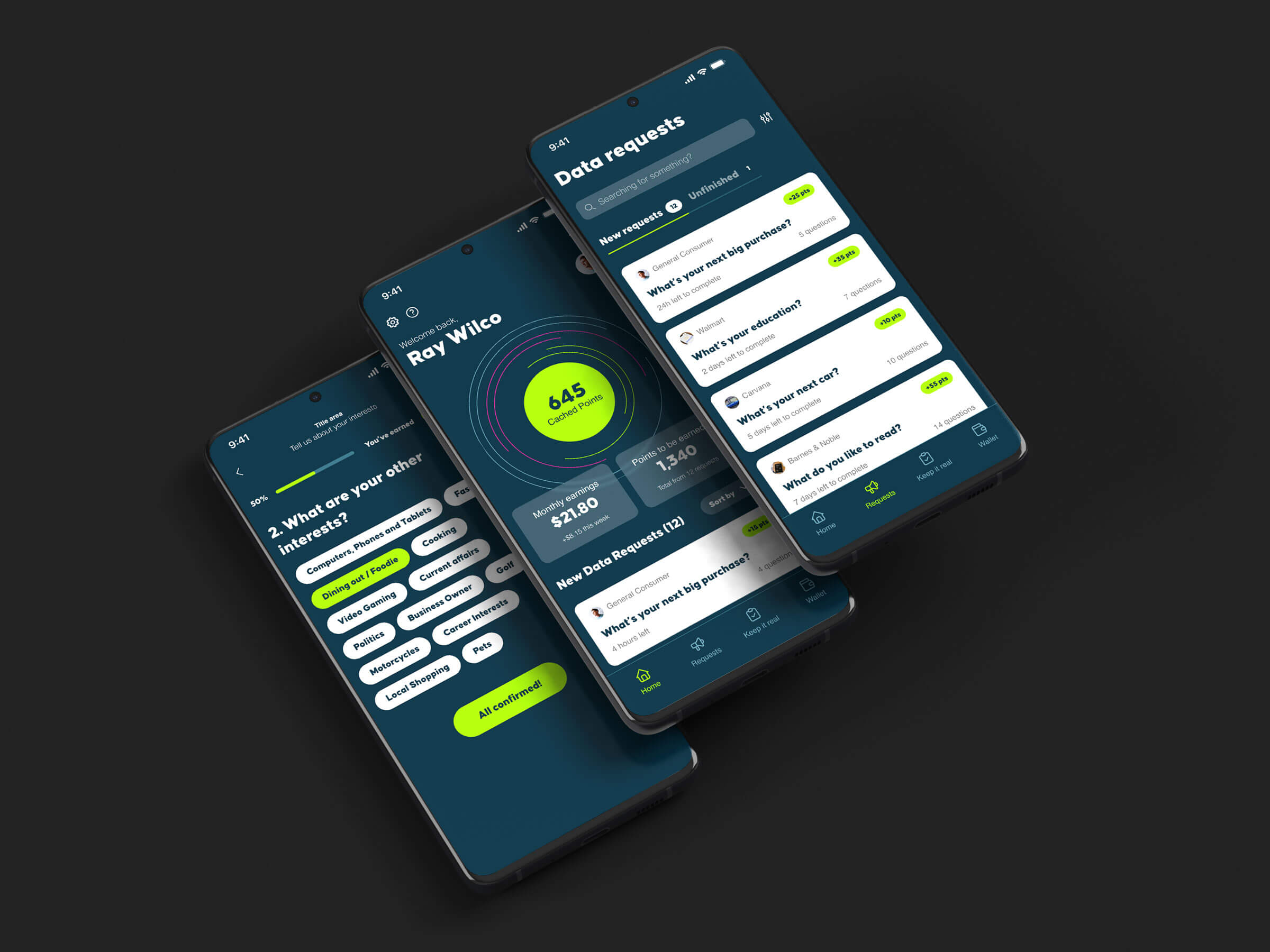Nearshore vs Offshore: Which Type of Software Outsourcing is Right for Your Software Development Needs?
Outsourcing software development is a popular choice for businesses looking to improve operational performance, reduce development costs, and drive profitability. By outsourcing software development, companies can access a larger pool of talent and resources, enabling them to scale resources as needed to meet changing business requirements and adapt to market demand. Moreover, a nearshoring or offshoring software development strategy can allow businesses to keep costs low while they test market fit and develop new products.
According to Statista, the IT outsourcing market is predicted to reach $425 billion by 2026, which indicates the increasing demand for remote team models that can deliver digital products quickly and reliably. To take advantage of these trends, it's essential to understand the difference between nearshoring and offshoring, two of the main software development outsourcing models. In this blog, we’ll compare nearshore vs offshore outsourcing and provide insights to help you determine which software development outsourcing model is right for business and budget.
Nearshore vs Offshore: What’s the Difference?
Simply put, nearshore software outsourcing involves partnering with software development companies located in nearby countries. These countries often share the same time zone, similar cultural values, and language similarities. For instance, a company based in the United States can outsource development to a country in South America such as Mexico, Peru, Chile or Brazil. While offshore outsourcing, on the other hand, involves partnering with a software development company located in further countries from the client So for a U.S. based business, offshoring development would include utilizing development teams in countries such as India, China, or commonly Eastern Europe. Both of these outsourcing options represent opportunities for cost-savings on development costs, yet each option has specific benefits and drawbacks.
The Pros and Cons of Nearshoring:
Agile nearshore development has emerged as an attractive alternative to traditional offshoring. By working with teams in nearby countries, businesses can take advantage of many of the same benefits as offshoring while minimizing some of the risks and challenges associated with offshoring to distant countries. However, like any outsourcing model, nearshoring has its own set of pros and cons that must be carefully considered before making a decision. Here are some of the most significant pros and cons of nearshore software outsourcing:
The benefits of nearshore software outsourcing:
- Cultural and language similarities: Nearshoring vendors often share a similar cultural and linguistic background with the client company, which can help minimize communication challenges and promote better collaboration
- Time zone advantages: Nearshore vendors are usually located in nearby time zones, such as pacific and central time, which allows for close real-time collaboration and faster response times compared to offshore outsourcing.
- Regulatory Compliance: Nearshoring vendors may be subject to similar regulatory requirements as the client company, which can help ensure compliance with data protection. privacy, and intellectual property laws.
- Security: Nearshoring can provide a more secure development process than offshore outsourcing can because it allows for more direct oversight and control over data handling and storage. This can help minimize the risk of data breaches and other security threats.
- Scaling: Nearshoring vendors can scale up or down more easily than offshore vendors. With nearshoring, the vendor is located in a neighboring or nearby country, making it easier for businesses to manage and collaborate with their teams. This closeness makes it simpler to adjust resources and staffing levels as needed for a project.
- Large Talent Pool: Depending on the country, nearshoring can offer access to a large pool of highly skilled professionals with experience in a variety of technologies and industries. This can provide companies with more options for finding the right talent for their specific needs.
Cons of Nearshoring:
- Higher Costs: Nearshoring may be more expensive than offshore outsourcing, especially if the vendor is located in a higher-cost country.
- Newer Model: Because nearshoring is a relatively new outsourcing model, there are still some challenges and uncertainties that businesses may need to navigate. For example, businesses may need to invest more time and effort into finding and vetting nearshore vendors, as the pool of available providers may be smaller than for offshore outsourcing.
The Pros and Cons of Offshoring:
While offshoring software development can certainly provide some benefits, it comes with a unique set of challenges. It’s essential to weigh its pros and cons before deciding whether it's the right fit for your business needs. Here are some of the most significant pros and cons to consider:
Pros:
- Lower Cost: One of the most significant benefits of offshore outsourcing is cost savings. Companies can often find highly skilled developers in countries such as Ukraine and Poland where the cost of living is lower, resulting in lower labor costs. The average labor cost per hour in Poland is only $14.44. The hourly rates for software development in Eastern European countries typically ranges from $25 to $49, making it an attractive destination for businesses looking to save costs.
- 24/7 Development: With offshore outsourcing, companies can take advantage of the time difference to have round-the-clock development and support. This can result in faster turnaround times and quicker project completion.
- Global Talent Pool: Offshoring allows businesses to tap into a global talent pool, which can help address skill shortages and provide access to technical expertise that may not be available locally. This can be particularly valuable in industries such as technology and engineering, where specialized skills are often in high demand.
Cons:
- Communication Challenges: Offshoring can come with communication challenges due to language barriers, cultural differences, and time zone differences. This can lead to misunderstandings, delays, and decreased productivity. According to a recent survey by Oberlo, 53% responders said that companies who outsource work communicate with their service providers every day. According to the same survey, about 21% of people said that outsourced teams were hard to communicate with.
- Quality Control Issues: Maintaining quality control can be more difficult with offshore outsourcing due to distance and lack of oversight. This can lead to issues with product quality, missed deadlines, and other problems.
- Security Risks: Offshoring can pose security risks, especially if sensitive data is shared with external vendors. This can result in data breaches, intellectual property theft, and other security threats.
- Political instability: Offshore outsourcing may be cheaper, but political instability in some countries can disrupt the project, leading to delays or even loss of the project. For example, while Ukraine has a growing IT industry and a highly skilled workforce, the risk of disruption to projects due to political instability can be a concern when offshoring to Ukraine.
How to Choose the Model That Works Best For Your Needs
Before you start searching for an outsourcing company, take some time to evaluate your requirements. Here are some questions you should ask yourself to determine which outsourcing model works best for you:
- What’s your budget? If you have a limited budget, it’s best to focus on countries with lower rates, such as nearshore locations like Mexico or offshore destinations like India. However, if you have a larger budget, you can consider countries with higher rates but with more experienced and professional developers, such as Argentina, Serbia, and Poland.
- How involved do you intend to be in the project? If you want to be highly involved in the project, it may be better to go with nearshore agile development. This way, you can easily communicate with the team and visit their office if necessary. On the other hand, if you prefer a more hands-off approach, an offshore provider may be more suitable.
- Is real-time communication important to you? If you need to communicate with your developers in real-time, it may be best to choose a nearshore technology provider. Time zone differences may make it difficult to communicate in real-time with offshore providers.
- Are there any specific local laws that you must comply with? If you have to comply with specific local laws, it may be better to choose a nearshore provider. They will have a better understanding of local regulations and can ensure that your project complies with all relevant laws and regulations.
- Is it critical for you to be in the same country or city as the outsourcing provider? If being in the same country or city as your outsourcing provider is essential, then you should consider a nearshore provider. However, if this is not a priority, you can choose an offshore provider.
- What type of outsourced services do you need? Depending on your requirements, you could opt for either project-based development services or team augmentation services. The former is best suited for businesses that need to complete a specific project within a defined timeframe, such as developing a new software application. The latter is designed to help businesses augment their existing teams with additional resources, which can be useful for ongoing development.
By answering these questions, you can evaluate your requirements and select the outsourcing model that works best for you. Remember that the location of the outsourcing company you choose can have a significant impact on whether it can meet your expectations, so take the time to consider all your options before making a decision.
Working with a Nearshore Software Development company
To ensure a successful partnership with a nearshore outsourcing company, it’s important to establish clear communication and expectations from the outset. This includes defining the scope of work, project timelines, and deliverables. It’s also crucial to choose a company that has a strong track record of delivering high-quality work and has experience working with businesses in your industry. Regular check-ins and progress updates can help ensure the project stays on track and any issues are addressed in a timely manner. Learn how to successfully outsource software development with our detailed blog post on the topic.
As a leading software development company in California, Asymm offers nearshore software development in Mexico. With a team of highly skilled and experienced professionals, we take a collaborative approach to each project, working closely with our clients to understand their unique needs and develop tailored solutions that exceed their expectations. Our expertise in recruitment, compliance, and ongoing management of employees ensure that we can provide maximum value and minimal disruption and overhead for our clients. Whether you’re looking to augment your in-house development team or outsource your entire software development project, we have the expertise and resources to help you achieve your goals.












